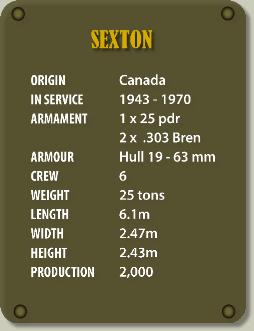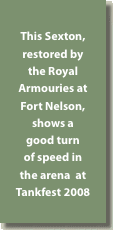
The issue of having artillery capable of keeping up with tanks had been apparent since the end of the First World War. The solution was to improvise the mounting of a suitable gun onto a tank chassis.
The Germans achieved this in two ways: by developing specialist Assault Artillery (Sturmgeschütz) and by using obsolescent or captured tanks as a basis for mobile artillery support.
The British, with the wide open spaces of North Africa to deal with, used standard or near obsolescent tanks.
The first attempt was the Valentine ‘Bishop’ - a standard 25 pounder howitzer in a large box-like superstructure on top of a Valentine II hull. This had a number of disadvantages, not least its very high silhouette.
It was swiftly replaced by the 105mm American M7 ‘Priest’ (the British Army convention was to give self propelled artillery ecclesiastical names).
Excellent as it was, there was nevertheless another problem: the British Army did not use the American 105mm anywhere else, meaning that unique ammunition had to be supplied for a relatively small number of users. Clearly another solution had to be found.

Attempts to fit the 25 pounder into the Priest flagged as the USA was fully committed to equipping its own forces. Thus the Canadians entered the equation. They had designed and produced a home-grown ‘cruiser’ tank – the Ram – on the US M3 (Grant/Lee) chassis. This was stalled after the decision to standardise on the M4 Sherman, so the chassis were available.
The 25 pounder was fitted to a number of these and the first examples arrived in the UK for evaluation in early 1943. They proved highly successful. The chassis and power train were proven, as was the gun, and it had 100% commonality with the other equipment in the armoured formations. A total of 2,150 were built between 1943 and 1945. Initially they were based on the Ram, but later versions were switched to the Grizzly (the Canadian version of the M4A1 Sherman).
The Sexton remained in British service until the mid 1950s, and even longer elsewhere. The Portuguese army used them into the 1970s, and the Australians even created their own local variant in the 1950s based on the M3 chassis, called the Yaramba.
